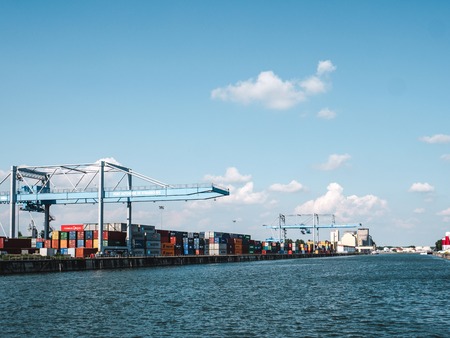Executive Summary
The past quarter has seen significant shifts in the UKs export and import landscape, shaped by both global economic headwinds and evolving domestic policies. Notably, trade volumes with key EU partners have shown modest recovery following recent disruptions, while non-EU markets are increasingly contributing to overall trade growth. Export activity in high-value sectors such as pharmaceuticals, automotive, and financial services continues to underpin the UKs international competitiveness. Conversely, imports of energy and raw materials remain elevated, reflecting ongoing supply chain adjustments and currency fluctuations. For investors, these trends signal a nuanced outlook—there are emerging opportunities in sectors demonstrating resilience and adaptability, but also heightened risks in industries exposed to persistent trade friction or regulatory change. Understanding these quarterly developments is essential for shaping investment strategies in the UK market.
2. Current Landscape of UK Trade
The current landscape of UK trade is shaped by evolving relationships with key global partners, sector-specific performance, and ongoing shifts in trade flows. Recent quarterly data reveals significant trends and adjustments, reflecting both post-Brexit realities and global economic pressures.
Major Trading Partners: An Overview
| Country/Region | Export Share (%) | Import Share (%) |
|---|---|---|
| European Union (EU) | 42.1 | 47.5 |
| United States | 13.8 | 9.7 |
| China | 4.6 | 7.2 |
| Rest of the World | 39.5 | 35.6 |
The EU remains the UKs most significant trading bloc, although its share has seen a marginal decrease as new markets have been explored. Notably, trade with the United States has shown resilience, while imports from China remain substantial despite geopolitical uncertainties.
Key Sectors Driving Trade Performance
| Sector | Recent Export Growth (%) | Recent Import Growth (%) |
|---|---|---|
| Automotive & Transport Equipment | -3.2 | -1.8 |
| Pharmaceuticals & Chemicals | 5.6 | 2.4 |
| Financial & Professional Services | 4.1 | N/A* |
| Agriculture & Food Products | -0.9 | -2.3 |
| Technology & Machinery | 2.7 | 3.5 |
* Note:
This sector is primarily export-driven.
The pharmaceutical and chemical sectors have outperformed expectations this quarter, underpinning much of the growth in exports. Conversely, traditional strengths such as automotive exports continue to face supply chain headwinds and regulatory hurdles post-Brexit.
Evolving Trade Flows and Implications for Investors
The data highlights two emerging patterns: diversification of export destinations outside the EU and increased imports of technology components, likely driven by domestic investment in digital infrastructure. These shifts present opportunities for investors looking at sectors with robust growth potential or those adapting swiftly to new trade dynamics.
The next section will discuss how these trends are influencing investor sentiment and market positioning within the UK’s evolving trade environment.

3. Influences Shaping UK Export and Import Patterns
The UK’s export and import patterns are the result of a complex interplay between economic, political, and regulatory forces. Investors assessing the quarterly trends must consider not only raw trade data but also the underlying factors that drive these numbers. In recent quarters, several core influences have been particularly salient.
Economic Factors: Currency Fluctuations and Demand Dynamics
Sterling’s volatility has played a significant role in shaping trade flows. A weaker pound post-Brexit has made UK exports more attractive internationally while increasing the cost of imports. However, global inflationary pressures and changing consumer demand—both domestically and in key markets such as the EU, US, and Asia—have led to unpredictable swings in export orders and import requirements. For investors, this means closely monitoring currency trends and economic forecasts is essential for anticipating sectoral winners and losers.
Political Landscape: Brexit Aftershocks and Trade Agreements
The aftereffects of Brexit continue to reverberate through the UK’s trading relationships. The transition away from EU membership introduced new customs procedures, border checks, and regulatory divergence, particularly impacting sectors like food, automotive, and pharmaceuticals. While recent efforts to sign free trade agreements with non-EU countries—such as Australia and New Zealand—offer growth potential, they have yet to fully offset the friction or volume lost from EU trade disruptions. Ongoing negotiations with major partners are closely watched by market participants seeking stability and new opportunities.
Regulatory Environment: Compliance and Adaptation
Post-Brexit regulatory changes have required businesses to adapt rapidly to new compliance regimes. Changes in standards—ranging from product safety to labelling—and increased paperwork have added costs and complexity, especially for small- and medium-sized enterprises (SMEs). At the same time, evolving sanctions regimes in response to global events (notably the Ukraine crisis) are reshaping permissible trade channels. Investors should pay attention to regulatory developments as they can directly impact operational margins and supply chain resilience.
Global Market Shifts: Supply Chain Realignments
The pandemic exposed vulnerabilities in global supply chains, prompting many UK firms to diversify suppliers or reshore elements of production. Additionally, shifts in global demand—driven by technological innovation or geopolitical tensions—are influencing which sectors see export growth versus stagnation. For example, green technologies and digital services are increasingly prominent in export portfolios, reflecting broader trends towards sustainability and digitalisation worldwide.
Investor Takeaway
A nuanced understanding of these multi-layered influences is crucial for investors navigating UK trade trends. Vigilance regarding policy changes, economic signals, and evolving international relationships will remain key to identifying both risks and emerging opportunities within the UK’s shifting export-import landscape.
4. Sector Spotlight: Opportunities and Risks
As we dissect the latest quarterly data on UK export and import flows, several key sectors emerge as noteworthy for investors seeking both opportunity and prudent risk management. Below, we review standout industries—namely manufacturing, technology, and services—to highlight their current performance, future prospects, and potential pitfalls within the UK’s evolving trade landscape.
Manufacturing: Rebound Amid Headwinds
The UK manufacturing sector has exhibited resilience despite ongoing challenges from supply chain disruptions and global market volatility. Notably, exports of automotive and aerospace components have seen a modest recovery, buoyed by stabilising demand from Europe and North America. However, persistent input cost inflation and regulatory changes post-Brexit continue to pose risks to margins.
| Sub-sector | Opportunities | Risks |
|---|---|---|
| Automotive | Growing demand for EVs in EU markets | Uncertain tariffs; reliance on imported parts |
| Aerospace | Increased orders as travel rebounds | Supply chain bottlenecks; skilled labour shortages |
Technology: Growth Engine with Caveats
The technology sector continues to be a driving force behind UK export growth, particularly in software, fintech, and cybersecurity. The government’s ongoing digitalisation initiatives and robust venture capital ecosystem underpin this momentum. However, increased scrutiny over data privacy regulations and global competition could temper further expansion.
| Sub-sector | Opportunities | Risks |
|---|---|---|
| Fintech | London’s status as a global hub; open banking reforms | Tightening regulatory frameworks; talent retention |
| Cybersecurity | Rising international demand amid threat escalation | Evolving compliance requirements; IP protection issues |
Services: Resilience in Uncertain Times
The UK’s service sector remains a linchpin of its export profile, with financial services and professional consulting leading the way. Despite macroeconomic headwinds, strong overseas demand—particularly from Asia-Pacific markets—has supported steady growth. Nevertheless, shifts in international regulation and growing competition from EU-based firms require close monitoring.
| Sub-sector | Opportunities | Risks |
|---|---|---|
| Financial Services | Sustained appetite for UK expertise; new trade agreements | Diverging regulations post-Brexit; reputational risks |
| Professional Consulting | Expansion into emerging markets; digital delivery models | Fee pressures; geopolitical uncertainty impacting client activity |
Investor Implications: Balancing Promise and Prudence
This quarter’s review highlights that while opportunities abound across manufacturing, technology, and services, each sector is accompanied by unique risks—ranging from regulatory shifts to supply chain fragilities. Investors would be wise to adopt a balanced approach: leveraging sector-specific strengths while maintaining vigilance over emerging threats that could alter return profiles in the coming quarters.
5. Regional Implications Across the UK
When examining the quarterly export and import trends, it becomes evident that the impact across the UK’s regions is far from uniform. Each region’s industrial structure, trading partners, and exposure to global supply chains play a pivotal role in shaping their economic outcomes.
England: Manufacturing Powerhouses and Service Hubs
The North West, with its advanced manufacturing sector—particularly automotive and pharmaceuticals—has seen both opportunities and challenges as export demand fluctuates in Europe and North America. Conversely, London and the South East remain largely resilient, leveraging their strengths in financial services and technology exports. The recent uptick in professional service imports highlights London’s ongoing status as a global business centre, yet also exposes vulnerabilities to international market shifts.
Scotland: Energy Exports and Whisky Resilience
Scotland continues to benefit from robust energy exports—especially oil, gas, and renewables—which have cushioned regional growth despite broader trade uncertainties. The food and drink sector, led by whisky exports, remains a stalwart performer, but recent fluctuations in EU demand underscore the need for diversification of trading partners.
Wales: Manufacturing Adjustments and Agri-Food Shifts
Welsh manufacturers have had to adapt quickly to shifting demand for steel and machinery products abroad. Agricultural exports are experiencing moderate growth; however, increased import costs for farming inputs have put pressure on margins. Investors should watch for government support measures aimed at enhancing Wales’ competitiveness in both sectors.
Northern Ireland: Border Dynamics and EU Trade Links
Northern Ireland occupies a unique position due to its direct trading links with both Great Britain and the Republic of Ireland. While the region benefits from easier access to EU markets under current arrangements, ongoing regulatory adjustments continue to shape import patterns—particularly for agri-food products and manufactured goods. These dynamics present both risks and opportunities for local businesses and external investors.
Investor Considerations by Region
For investors, understanding these regional nuances is crucial. Opportunities may be found in sectors demonstrating resilience or adaptability—such as Scotland’s energy transition or London’s fintech ecosystem—while caution is warranted where exposure to volatile import costs or regulatory uncertainty remains high. Regional policy interventions could further influence trade flows, making close monitoring of local developments essential for informed investment decisions.
6. Strategic Recommendations for Investors
Actionable Guidance Based on Current Trade Dynamics
For investors evaluating the UK market, a data-driven approach to export and import trends is essential. The recent quarterly figures reveal shifting trade balances, sectoral performance variances, and evolving geopolitical influences. To navigate these complexities, we recommend the following strategies:
1. Prioritise Resilient Sectors
Recent data points to robust growth in pharmaceuticals, advanced manufacturing, and digital services exports. UK-based and international investors should consider increasing exposure to companies within these sectors, particularly those with diversified supply chains and strong European or global reach.
2. Monitor Supply Chain Vulnerabilities
The continued impact of Brexit-related regulations and global shipping disruptions have highlighted vulnerabilities in certain import-dependent industries—such as automotive and food processing. Investors are advised to assess portfolio companies’ supply chain resilience and prioritise businesses with adaptive sourcing strategies or domestic alternatives.
3. Leverage Sterling Volatility
Sterling’s fluctuations in response to trade data releases and policy updates create opportunities for hedging or currency-driven investments. Active monitoring of FX trends and consideration of GBP-hedged instruments could protect returns or unlock value during periods of volatility.
4. Embrace ESG and Regulatory Shifts
The UK’s commitment to net zero and evolving trade agreements increasingly influence both export potential and investment risk profiles. Investors should target firms aligning with green standards and monitor regulatory updates, particularly around carbon border adjustments or sustainability reporting requirements.
5. Maintain a Global Perspective
Although intra-European trade dynamics remain pivotal, emerging markets in Asia-Pacific and North America are becoming more significant partners for UK exporters. Diversifying holdings to capture gains from new trade deals or burgeoning demand outside the EU can mitigate regional risks.
Conclusion: Informed Agility is Key
The interplay between macroeconomic shifts, policy developments, and sector-specific opportunities requires investors to remain agile but grounded in empirical analysis. By integrating these recommendations into due diligence processes, both domestic and international investors can position themselves for resilience—and potential outperformance—in the UK’s evolving trade landscape.


